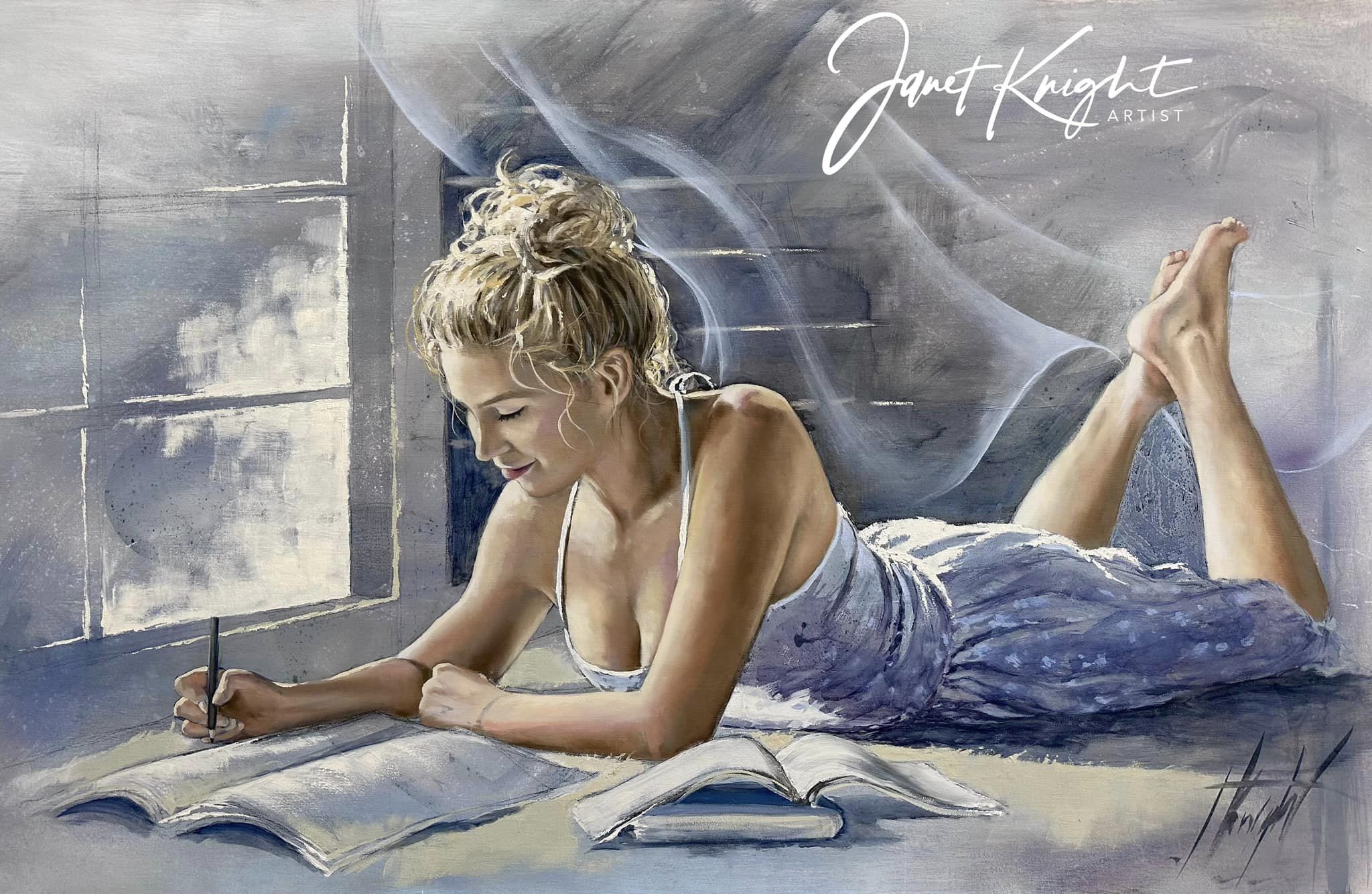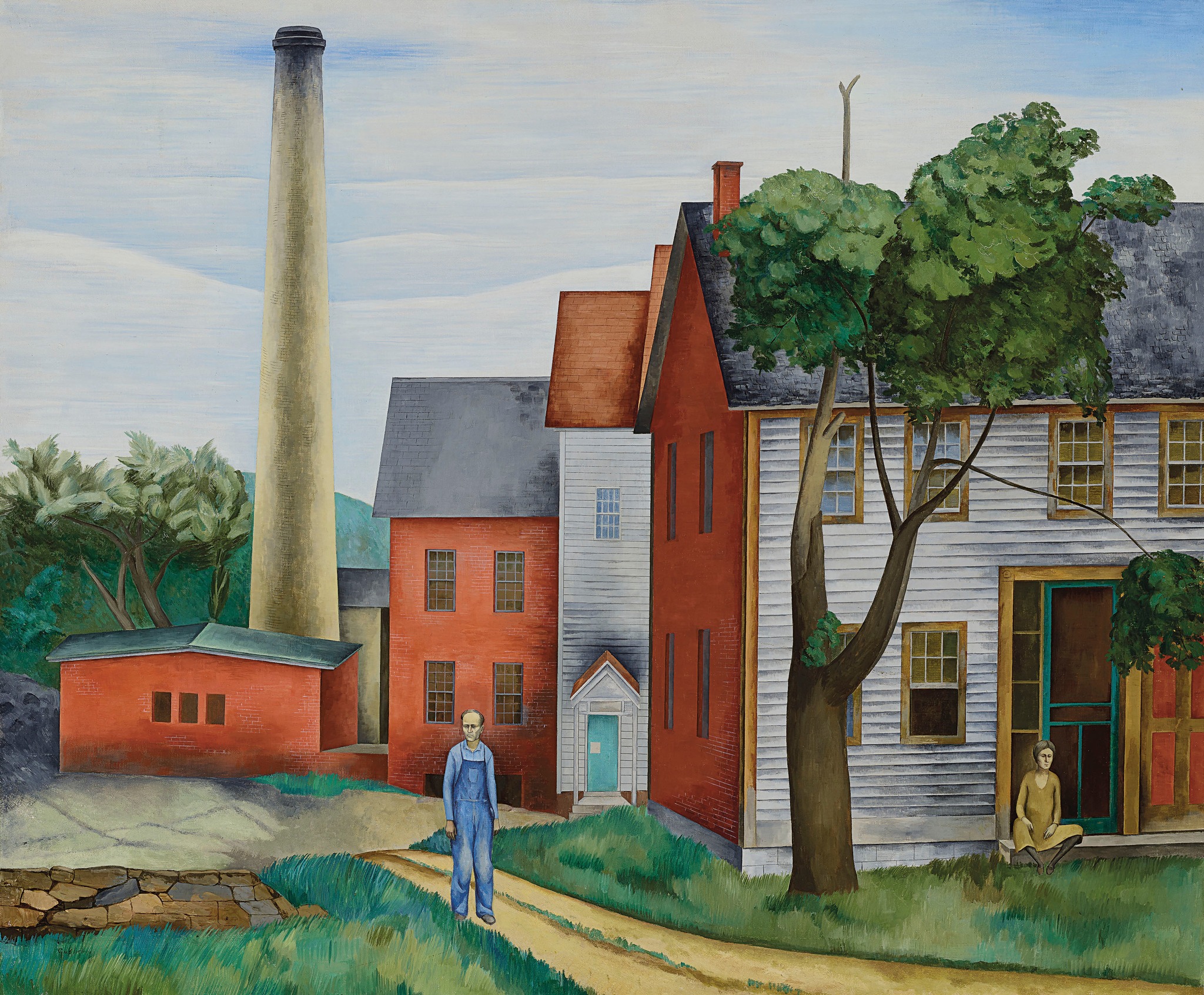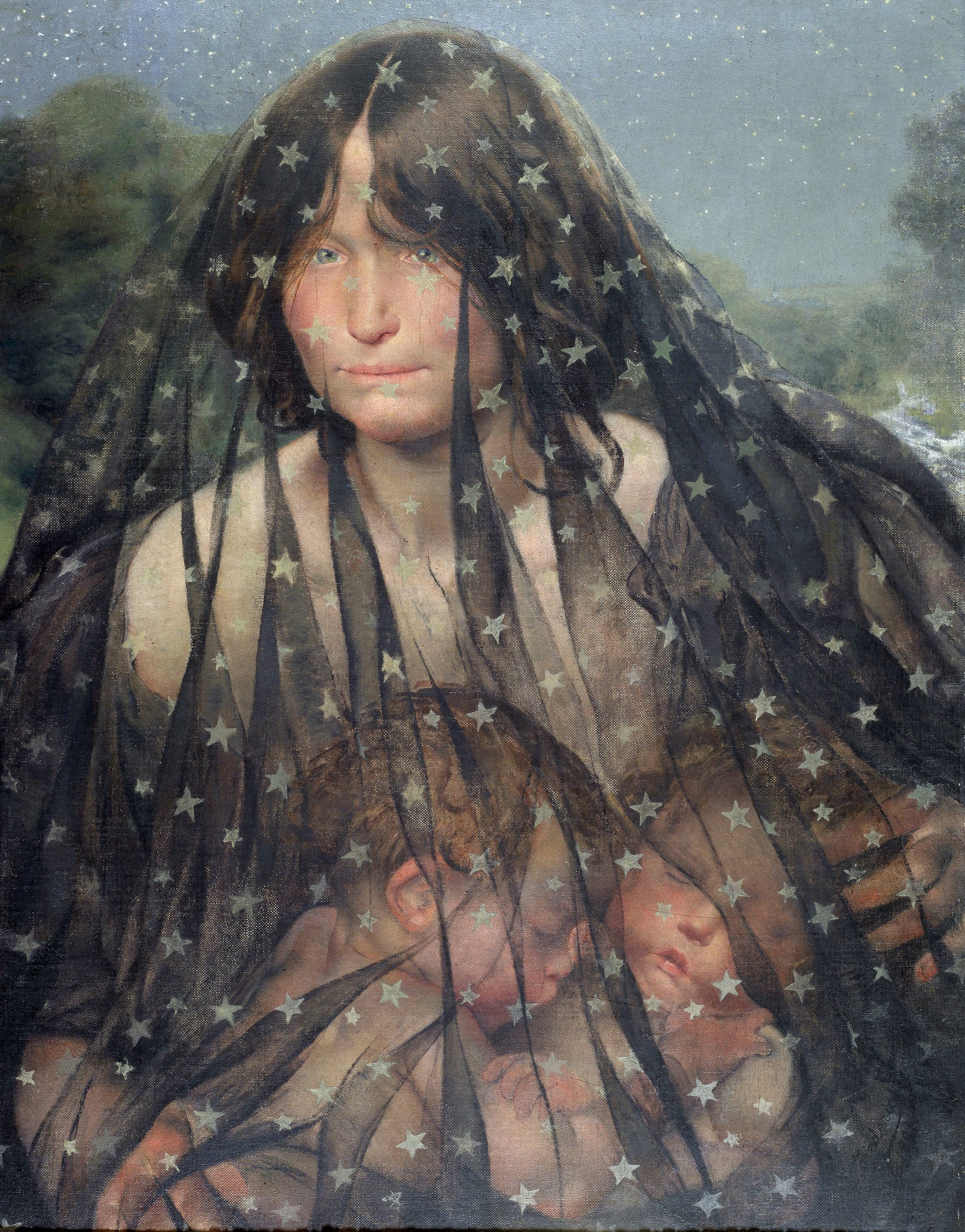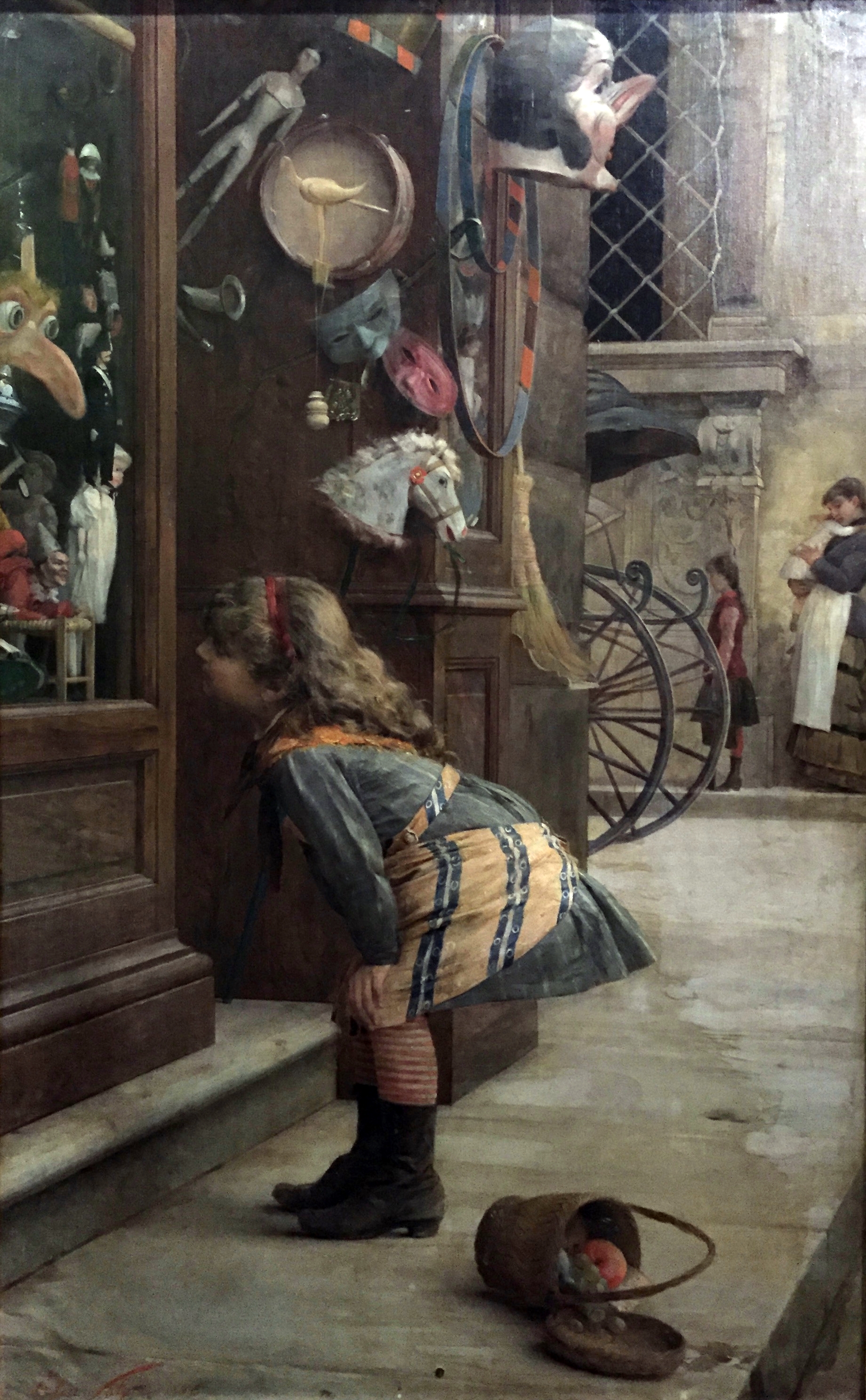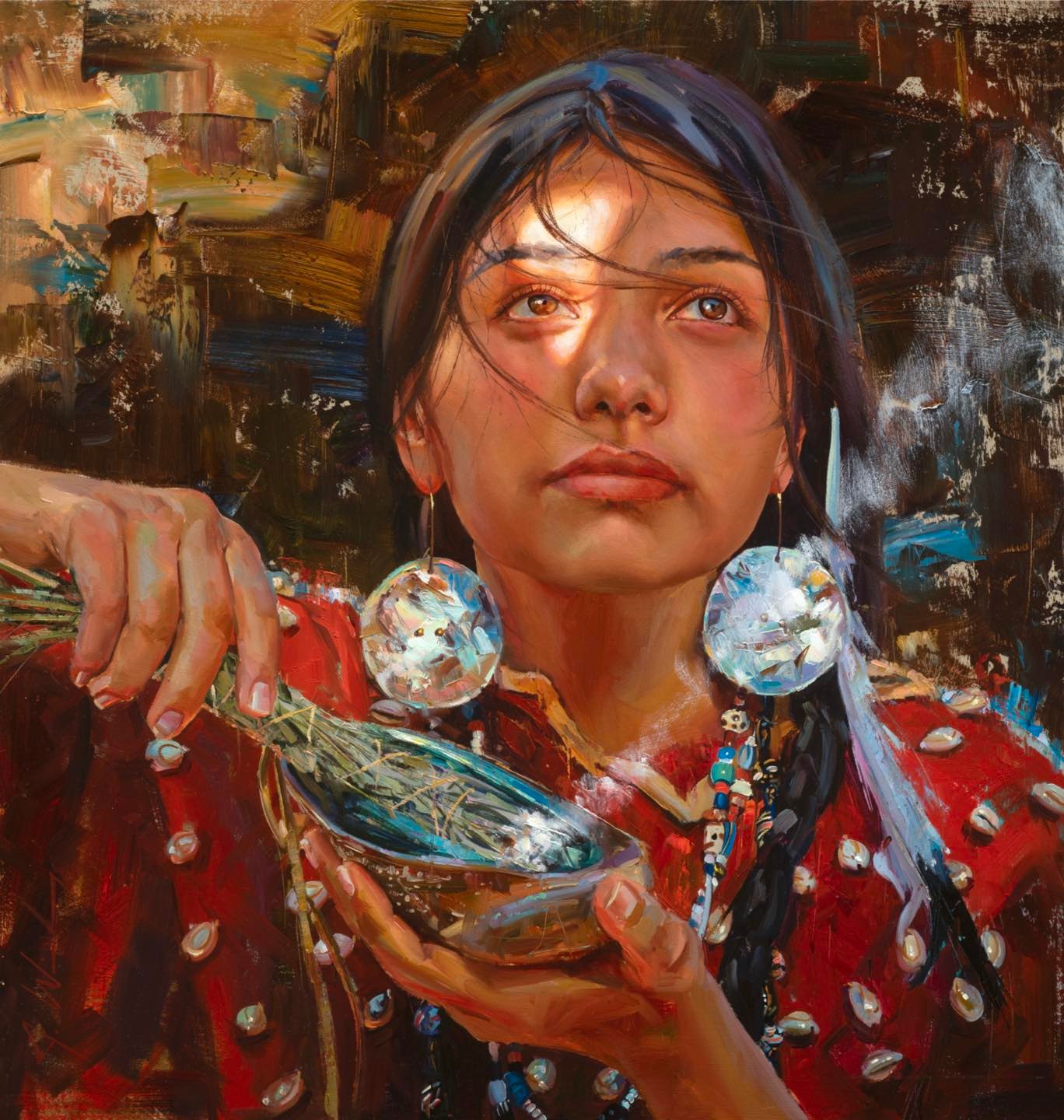He was well known in New York, but soon forgotten after his death, as abstract expressionism came to overshadow artists like him.
There are elements of precisionism, surrealism, geometric abstraction, regionalism and social realism in his work.
His paintings often commented on poverty and other social and political themes; bleakness and death appear regularly in his pre-war works. With Walter Quirt and James Guy, he was a prominent exponent of "social surrealism".
After the war, his painting became more planar and abstract, with elements of cubism, and he disavowed the personal sadness in his earlier works in favor of expressing the "exuberance and organic means of life itself".
The New York Times also attributed his decline to his being "a relentless borrower, an irrepressible eclectic who seemed to prey voraciously on the styles of others".
Born in Cairo, Egypt, as a child he lived in Milan and Geneva while his Italian father, a professional violinist, toured the world.
In 1914 his parents brought him to the United States, where they lived in Italian Harlem, New York.
He was interested in sculpture at a young age and worked at a casting factory.
He attended the National Academy of Design in the evening beginning in 1920, while also attending high school, and attended full-time from 1923 to 1926.
The next year he became a naturalized citizen.
The Great Depression brought financial hardship, but the difficult times inspired his artwork.
From 1935 to 1939, he worked with the Federal Art Project, which supported artists during the Depression.
In the 1930s he spent many summers at the MacDowell Colony for artists in Peterborough, New Hampshire.
Guglielmi had his first one-man show in 1938, exhibiting his new work Mental Geography.
Inspired by the Spanish Civil War-depicting a bombed-out Brooklyn Bridge -it was a warning that European fascism might spread.
Guglielmi was part of the 1943 "American Realists and Magic Realists" exhibition at the Museum of Modern Art.
He was with the Army Corps of Engineers in the war between 1943 and 1945, and did not paint.
In the 1950s, he held positions at Louisiana State University, first as a visiting artist and then as an associate professor.
He died in 1956 of a heart attack in Amagansett, New York.
Guglielmi's work is in the collection of the Art Institute of Chicago, the Detroit Institute of Arts, the Metropolitan Museum of Art, the Museum of Modern Art, the San Francisco Museum of Modern Art, the Smithsonian American Art Museum and the Whitney Museum of American Art. | Source: © Wikipedia
Osvaldo Louis Guglielmi (1906-1956) è stato un pittore Americano.
Era molto conosciuto a New York, ma presto dimenticato dopo la sua morte, poiché l'espressionismo astratto arrivò a mettere in ombra artisti come lui.
Ci sono elementi di precisione, surrealismo, astrazione geometrica, regionalismo e realismo sociale nel suo lavoro.
I suoi dipinti spesso commentavano la povertà ed altri temi sociali e politici; desolazione e morte appaiono regolarmente nelle sue opere prebelliche.
Con Walter Quirt e James Guy fu un esponente di spicco del "surrealismo sociale".
Dopo la guerra, la sua pittura divenne più planare e astratta, con elementi di cubismo, e rinnegò la tristezza personale nelle sue opere precedenti in favore dell'espressione "dell'esuberanza e dei mezzi organici della vita stessa".
Anche il New York Times attribuì il suo declino al suo essere "un mutuatario implacabile, un eclettico irrefrenabile che sembrava predare voracemente lo stile degli altri".
Nato al Cairo, in Egitto, da bambino ha vissuto a Milano e Ginevra, mentre suo padre italiano, violinista professionista, girava il mondo.
Nel 1914 i suoi genitori lo portarono negli Stati Uniti, dove vissero ad Italian Harlem, New York.
Si interessò alla scultura in giovane età e lavorò in una fabbrica di fusione.
Frequentò serale l'Accademia Nazionale di Design a partire dal 1920, frequentando contemporaneamente anche il liceo, che frequentò a tempo pieno dal 1923 al 1926.
L'anno successivo divenne cittadino naturalizzato.
La Grande Depressione portò difficoltà finanziarie, ma i tempi difficili ispirarono le sue opere d'arte.
Dal 1935 al 1939 lavorò con il Federal Art Project, che sostenne gli artisti durante la Depressione.
Negli anni '30 trascorse molte estati alla MacDowell Colony per artisti a Peterborough, nel New Hampshire.
Guglielmi tenne la sua prima mostra personale nel 1938, esponendo la sua nuova opera Geografia mentale.
Ispirato alla guerra civile spagnola, raffigurante un ponte di Brooklyn bombardato, era un avvertimento che il fascismo europeo avrebbe potuto diffondersi.
Guglielmi fece parte della mostra "American Realists and Magic Realists" del 1943 al Museum of Modern Art.
Era con il Corpo degli Ingegneri dell'Esercito nella guerra tra il 1943 e il 1945 e non dipingeva.
Negli anni '50 ricoprì incarichi presso la Louisiana State University, prima come artista in visita e poi come professore associato.
Morì nel 1956 per un attacco di cuore ad Amagansett, New York.
Il lavoro di Guglielmi è nella collezione dell'Art Institute of Chicago, del Detroit Institute of Arts, del Metropolitan Museum of Art, del Museum of Modern Art, del San Francisco Museum of Modern Art, lo Smithsonian American Art Museum ed il Whitney Museum of American Art.

